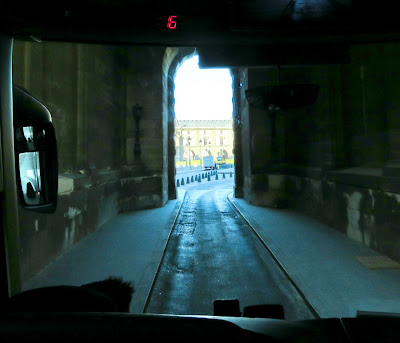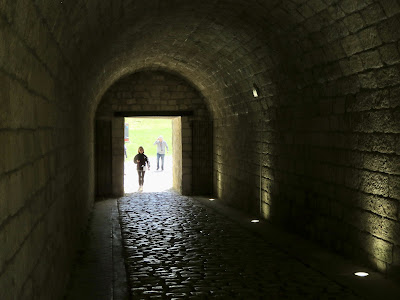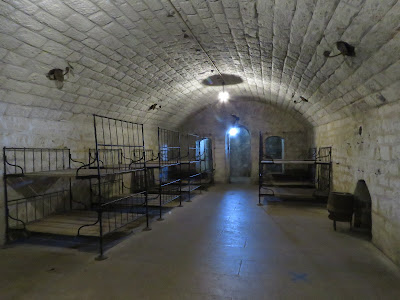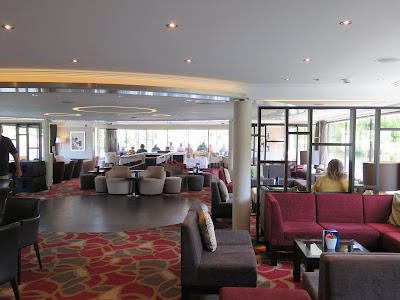Friday, 9 June 2023
Cruising the Moselle: Koblenz to Rudesheim to Elville, Germany
It's almost the end of my seven days on Imagery II and the blog is beginning to catch up (almost). Today we sail the most beautiful and iconic stretch of the Rhein River Gorge, famous in song and story. We pass a large number of hilltop castles and hill bottom small towns, each with its own church and its own bar--in one small town, the two institutions share the same structure; worshippers must pass through the bar into and out of the church. But much more trivia about the Moselle and the Rhein will appear in the very next blog. But now I must return to the departure from Paris, the visit to Verdun, and the arrival in Remich, Luxembourg, to board the ship.
Sunday, 4 June 2023
Paris to Remich, Luxembourg
Because there is little traffic in central Paris at 8am on Sunday morning, the coach driver can take us directly through the city before joining the highway. He even passes through the very narrow gateway of the Louvre, just to impress his passengers.
There are only 12 of us on a very large bus (other cruise passengers will be making their own way to Remich), as we head northeast on the tollroad that leads to Lorraine and Alsace (in order of appearance), but more commonly known as Alsace-Lorraine.
It's a pleasant three-hour drive to the small city of Verdun. We pass through mostly agricultural and forested areas, with lovely grasses waving in the breeze. We stop at a highway rest-stop to buy provisions for lunch, since most all of the shops are closed on Sundays. The coach arrives in the center of Verdun and passengers are given 90 minutes to explore the center of town or to have a glass of wine or beer.
There is a lovely promenade and terrace along the River Meuse, but the town is really defined by its sheer number of war memorials.
 |
| Modern Memorial and Medieval City Gate |
For those unfamiliar with the history of the First World War, I suggest using Google to research the full story of this most ferocious, deadly, and longest battle of the war, from February to November 1916--a battle that lasted 300 days and cost over 700,000 casualties--305,000 killed or missing and 400,000 wounded, with equal numbers on the French and German sides. Like Gettysburg in the US, the battlefields of Verdun have become both a national shrine of remembrance of the needless sacrifice of so many young men, and an international forum for an end to all wars.
The Verdun Memorial Park covers a large number of sites--too many to visit coherently in one day. As the coach drive to Fort Douaumont, we pass a series of "disappeared villages." These places were evacuated at the start of the battle and never rebuilt or repopulated later. At the Fort, visitors climb a series of steps and hills to see the way the large defensive cannons emerge from the shelters below, and then walk through large parts of the underground area where soldiers lived, fought, and died.
As we drive from the fort to the Ossuary, a special place of remembrance, we have a fleeting look at the vast array of white crosses and stones under which almost a whole generation of French young men are buried. There is also a German cemetery nearby and an American cemetery as well. This burial area would seem to be the most moving part of the memorial and at the start of the tour we are promised a walk through the grounds, especially as the weather is so fine. But because our guide has been so verbose and interested in his own storytelling, there isn't enough time after visiting the fort and the Ossuary. Bummer!
The Ossuary is a large memorial building holding the bones of 130,000 unknown French and German soldiers in a hall that measures 450 feet long. No photographs are allowed.
It is only 45 minutes to the small port on the Moselle in Remich, where we happily board our home for the next seven days. Here are some photos, but I will save a discussion of the ship and the cruise for a later blog.

















__03.jpg)